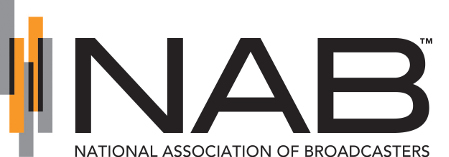NAB on EAS: Keep It Simple, Keep It Affordable
WASHINGTON—The nation’s largest broadcast association says it welcomes government discussions about improving the Emergency Alert System. But it is raising specific concerns and cautions regarding notifications of false alerts, cyber security and multilingual EAS.
The National Association of Broadcasters this week handed its comments to the Federal Communications Commission. One theme: Don’t micromanage local efforts to test and publicize EAS.
For example, instead of mandating the frequency and parameters of tests, the commission should simply provide local stakeholders with the tools they need, NAB said, “and then allow them the discretion to schedule and structure EAS tests consistent with the characteristics of the local population, geography and weather.” Local emergency managers and SECCs, NAB argues, are better positioned to decide how and whether to conduct live tests. “Similarly, the commission should not dictate whether EAS public service campaigns must include the live code, especially given the risks of triggering false alerts or mistakenly causing public confusion.”
The comments come in response to FCC proposals to assess and update the EAS system. NAB’s remarks were signed by executives Rick Kaplan, Larry Walke and Kelly Williams.
[Read the NAB filing (PDF).]
Overall, NAB hails the initiative but asked the FCC to consider costs and burdens on broadcasters. “Where appropriate, NAB would encourage the commission to provide EAS participants with the tools to enhance EAS, and allow them the discretion to structure EAS testing and public awareness efforts, and address EAS security consistent with the need and interests of their local communities.”
It emphasized that broadcasters “are committed to safeguarding EAS” and that the association supports efforts to enhance security, “given the increasing cybersecurity risk to all IP-based communications systems.”
It supports an idea that stations and other participants be required to demonstrate their security efforts based on best practices or similar means. But the association worries that some aspects may be unduly burdensome. “For example, requiring an annual certification of EAS security as part of the new Electronic Test Reporting System underestimates the resources needed to perform a complete, accurate technical review of a station’s equipment and systems.”
“Most broadcasters would have to hire an outside IT consultant to fulfill this obligation” NAB said. “A formal certification would also … subject broadcasters to potential commission enforcement, which seems to contradict the commission’s goal of allowing EAS participants the flexibility to address EAS security as they see fit.” The NAB suggests that the commission incorporate its recommended security measures into its Self-Inspection Checklists, and “treat compliance like similar obligations imposed on broadcasters concerning the operational status of EAS equipment.”
On another contentious topic, NAB said it supports wider dissemination of multilingual EAS alerts but noted that broadcasters still function primarily as passive conduits of alerts from emergency managers. Stations should not be required to translate EAS alerts at the station level anytime soon, it argued. “Only a few months ago, the commission found that alert originators are best positioned to effect multilingual alerting because broadcasters lack the capability, and this view remains correct.” Machine-generated EAS alert translation is still a nascent technology, it said, and using it should be voluntary at least for now.
NAB also said a proposal that broadcasters must file a report about a false EAS alert within 30 minutes is unrealistic. “Even more troublesome is the proposal to make public the filing of such reports, which may needlessly embarrass stations.” NAB sees no reason for an initial false alert report to be made public.
It supports enhancing the authentication of EAS messages but cautioned the commission to consider implications of any new mechanisms on the consumer response to alerts, and how to include authentication for alerts issued by NOAA Weather Radio.
“Most importantly, NAB urges the commission to allow a longer, more flexible time frame for implementation of any authentication technology that might require the replacement of EAS equipment.”
It asked the FCC to avoid obligations that would require broadcasters to purchase new EAS equipment. It said be wary of centralizing and virtualizing EAS in a way that produces a single point of failure. And it said “ease of use” is a current benefit of EAS, and that virtualization and similar changes “could overly complicate the system, especially for smaller broadcasters and other EAS participants with few IT resources.”
The broadcast group is pleased the FCC plans to modernize rules permitting cable TV operators “to unilaterally force-tune broadcasters to another cable channel during EAS events.” But it said it would not comment, for the time being, on proposed streamlining of state EAS plans, deferring to State Emergency Communications Committees and other state and local experts.

Get the TV Tech Newsletter
The professional video industry's #1 source for news, trends and product and tech information. Sign up below.
